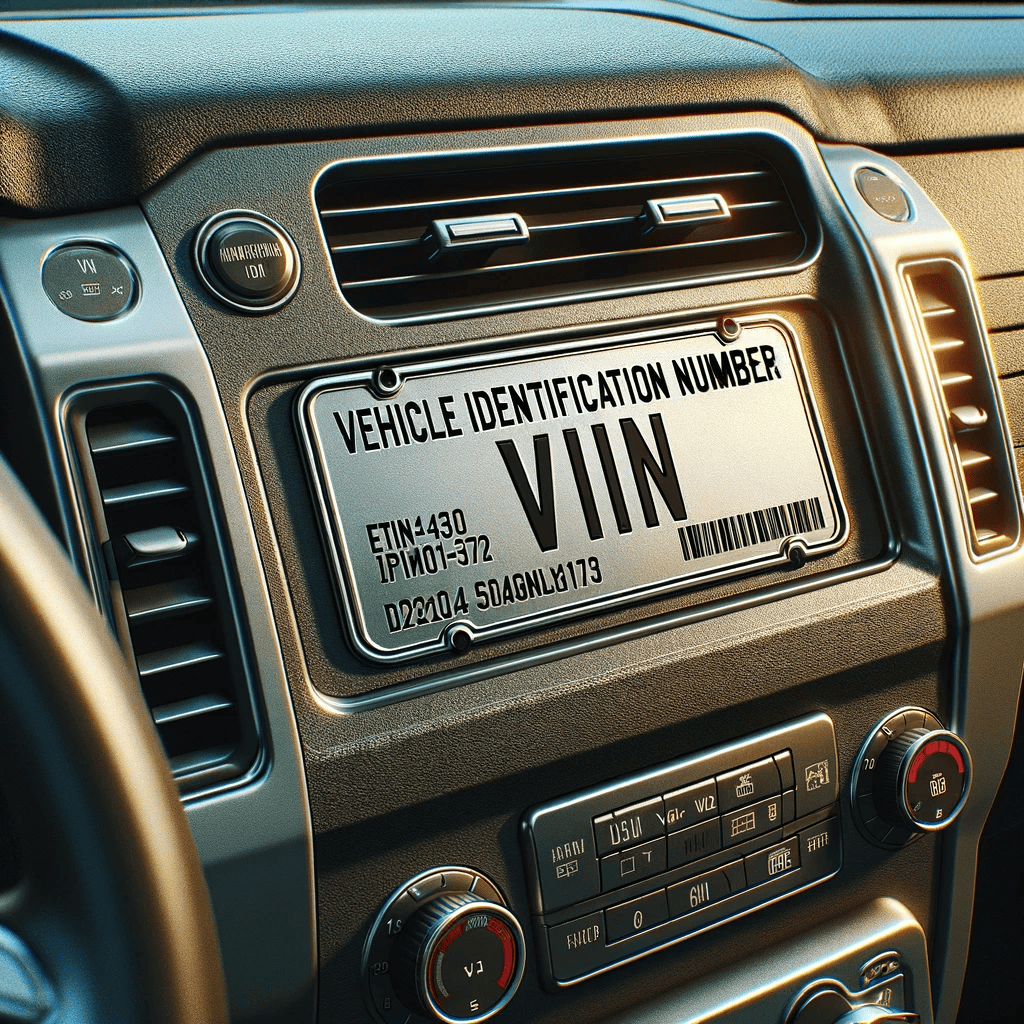Table of Contents
The Vehicle Identification Number, commonly known as VIN, is a unique code acting as the definitive identifier for a specific automobile, much like a fingerprint is to an individual. This exclusive number distinguishes one vehicle from another, ensuring that no two vehicles share the same VIN.
Understanding a VIN is crucial for various reasons. It’s necessary when you’re applying for car insurance, registering your vehicle, or trading it in. Additionally, if you’re considering purchasing a used car, SUV, or truck, the VIN allows you to access a detailed vehicle history report, providing insights into the car’s past, including any accidents or major repairs.
A VIN typically consists of 17 characters, a mix of letters and numbers, each of which holds specific information about the vehicle. This information includes the country of manufacture, the manufacturer, the vehicle type and model, the engine type, the year of production, and a unique serial number. Learning to decipher a VIN can give you valuable insight into the vehicle’s history and specifications.
VIN History
The concept of the Vehicle Identification Number (VIN) was first introduced in 1954. However, before 1981, VINs lacked standardization, with each automaker adopting its own format. This lack of uniformity means that vehicles produced from the 1950s to 1980 often cannot be decoded using contemporary methods. For information about these vehicles, one would typically need to contact the relevant Department of Motor Vehicles or the vehicle manufacturer directly.
In a significant move towards standardization, the National Highway Traffic Safety Administration (NHTSA) in 1981 mandated that all on-road vehicles must have a standardized 17-digit VIN. This decision was aimed at improving consistency and aiding in vehicle tracking and identification.
The VIN is usually stamped onto a plate located on the dashboard near the windshield on the driver’s side, making it easily visible from outside the vehicle. Another common location for the VIN is the driver-side door jamb. Additionally, it’s often stamped on the engine’s firewall.
These modern, standardized 17-digit VINs are incredibly useful for accessing detailed vehicle history reports. Such reports can reveal a wealth of information, including records of ownership, accidents, repairs, and maintenance.
Furthermore, the National Highway Traffic Safety Administration provides a VIN lookup tool, allowing car owners and potential used-car buyers to check if there are any open recalls on a vehicle. This tool enhances consumer safety by providing easy access to crucial safety-related information.
Decoding your VIN

Vehicle Identification Number (VIN) is like a special code for a car. It has 17 letters and numbers. Each part of the VIN tells us something about the car. Let’s decode them.
- First 3 Characters (Who Made It and Where):
- The first character shows the country where the car was made.
- The second character tells us the company that made the car.
- The third character, along with the first two, tells us what kind of car or which part of the company made it.
- Characters 4-8 (About the Car):
- These characters give information like the type of car, the engine, and other details.
- Character 9 (A Special Check Number):
- This number is used to check if the VIN is correct and real.
- Character 10 (Year the Car was Made):
- This character tells us the year the car was made.
- Character 11 (Where the Car was Made):
- This character shows which factory the car was made in.
- Characters 12-17 (The Car’s Unique Number):
- These are special numbers that the car company uses to know exactly which car this is.
Each part of the VIN helps to know important things about the car, like where it’s from, who made it, and its special features. This number is really important for keeping track of cars for things like registering them, insuring them, or if there is a recall.
How to Find the Vehicle’s VIN Number
To locate a vehicle’s VIN (Vehicle Identification Number), which is essential for various purposes such as registration, insurance, and tracking the car’s history, you need to know where to look. Typically, the VIN is a 17-character string composed of numbers and letters.
Firstly, the most common place to find the VIN is on the dashboard on the driver’s side, visible through the windshield. It’s usually located in the corner closest to the driver. Alternatively, check the door post on the driver’s side, where the door latches when closed; a sticker here often displays the VIN.
If these spots don’t yield results, open the hood. Sometimes, the VIN is etched on the front of the engine block. This location can vary depending on the vehicle make and model, so it might require some searching. Additionally, the car’s frame near the windshield washer container often bears the VIN.
For a more thorough search, the rear wheel well or the trunk under the spare tire can be other hiding spots for the VIN. If you still can’t find it, the vehicle’s insurance card or policy, as well as the title and registration, should list the VIN. Remember, the VIN is crucial for identifying your vehicle and should be kept secure and accessible.
How can you check your car value using VIN?


To accurately check your car’s value using its VIN (Vehicle Identification Number), you can utilize specialized online services that offer detailed vehicle appraisals. One such exceptional platform is YourCarIntoCash. This website stands out as a premier provider for car value assessments, leveraging the specific information encoded in your car’s VIN.
By entering your vehicle’s VIN on the YourCarIntoCash website, the service accesses a wealth of data specific to your car, such as make, model, year, manufacturing details, and history. This information plays a crucial role in determining the most accurate and current market value of your vehicle. Their system considers various factors like your car’s condition, mileage, and any unique features or modifications, which are essential in a comprehensive car worth check.
Using YourCarIntoCash simplifies the process of finding out how much your car is worth. Not only do they offer a user-friendly platform for a quick and easy check car value service, but they also provide guidance and support if you decide to sell. Their approach streamlines selling your vehicle, making it a hassle-free experience. This service ensures that you receive a fair and transparent evaluation, crucial when considering selling your car. So, if you’re looking to check your car’s value with the utmost accuracy and ease, YourCarIntoCash is an excellent choice.


